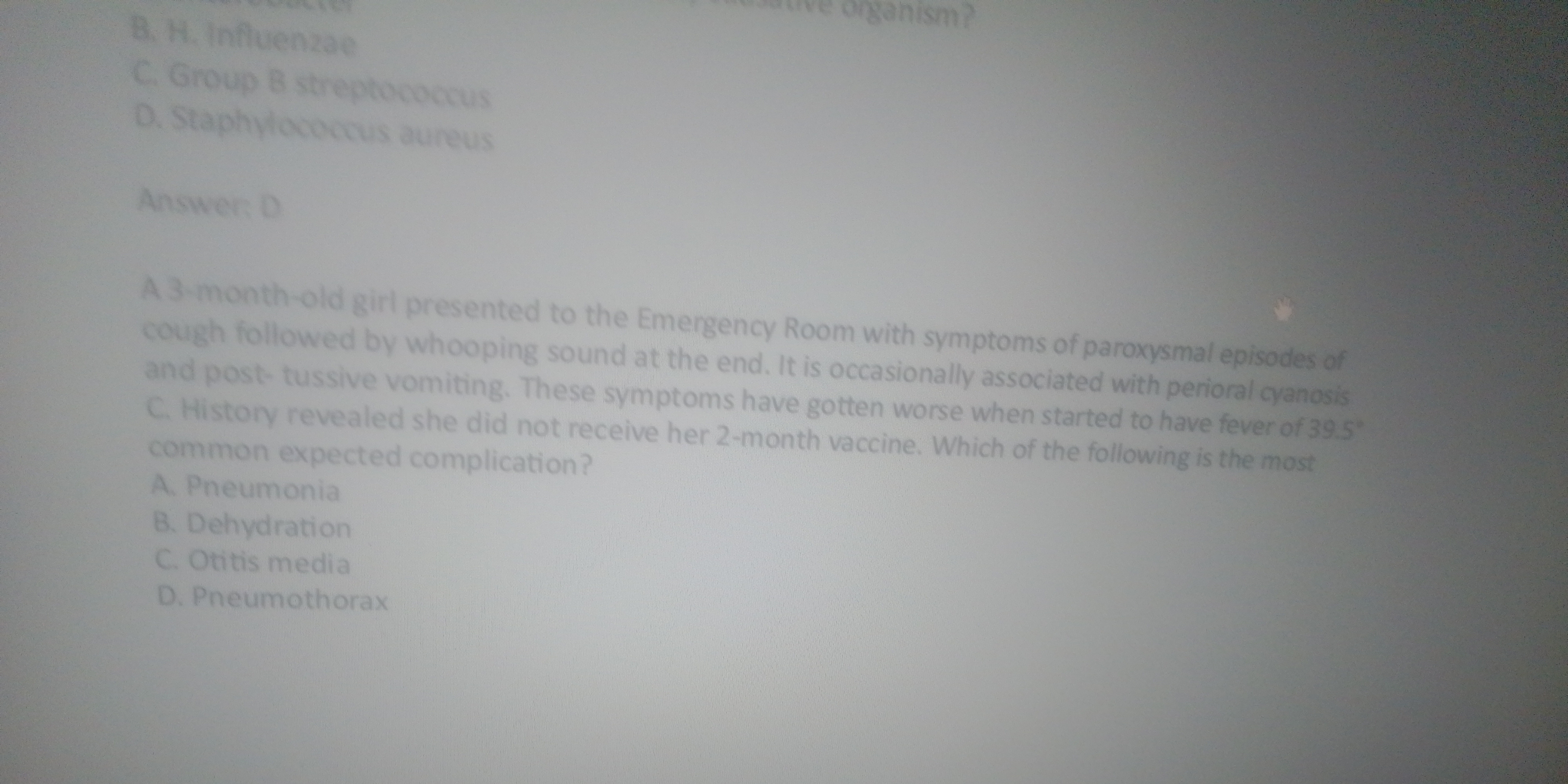A 3-month-old girl presented to the Emergency Room with symptoms of paroxysmal episodes of cough followed by a whooping sound at the end. It is occasionally associated with periora... A 3-month-old girl presented to the Emergency Room with symptoms of paroxysmal episodes of cough followed by a whooping sound at the end. It is occasionally associated with perioral cyanosis and post-tussive vomiting. Symptoms have gotten worse and started to have a fever of 39.5 degrees. History revealed she did not receive her 2-month vaccine. Which of the following is the most common expected complication? A. Pneumonia B. Dehydration C. Otitis media D. Pneumothorax

Understand the Problem
The question presents a clinical scenario of a 3-month-old girl presenting with symptoms suggestive of a respiratory infection, including a whooping cough and fever, and asks to identify the most common expected complication given the information that she has not received her 2-month vaccine. This is a medical diagnosis question.
Answer
Pneumonia
The most common expected complication is Pneumonia
Answer for screen readers
The most common expected complication is Pneumonia
More Information
The question describes a 3-month-old with symptoms indicative of pertussis (whooping cough). The most common complication of pertussis, especially in infants, is pneumonia.
Tips
It's crucial to recognize the signs and symptoms of common diseases like pertussis, especially in unvaccinated children, to anticipate potential complications.
Sources
- Clinical Features of Pertussis - CDC - cdc.gov
- Symptoms of Whooping Cough - CDC - cdc.gov
AI-generated content may contain errors. Please verify critical information